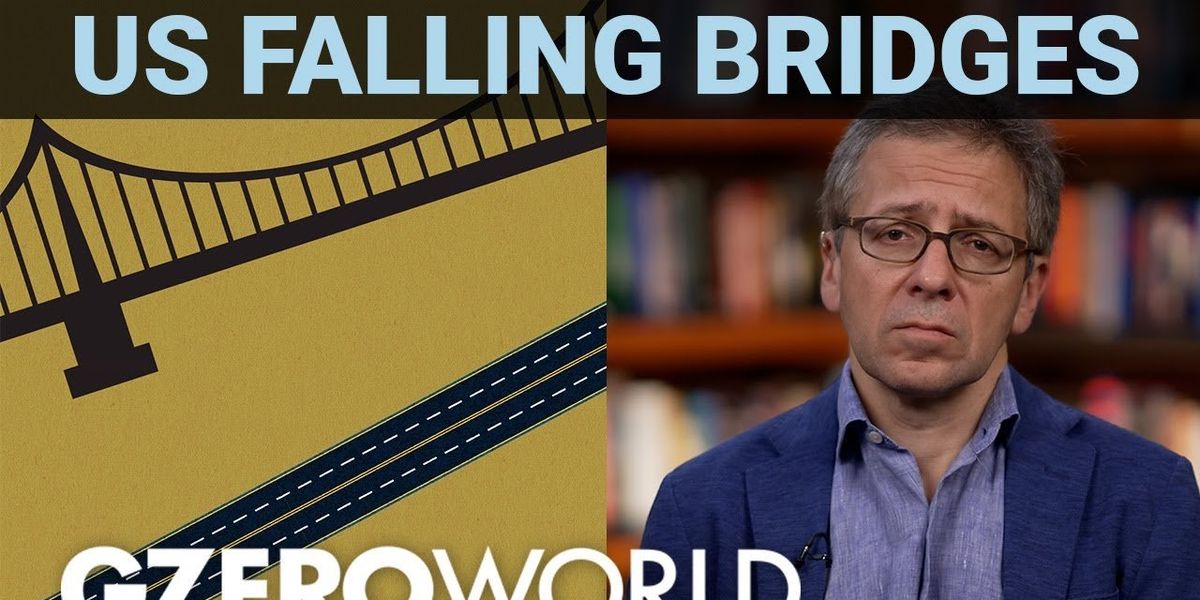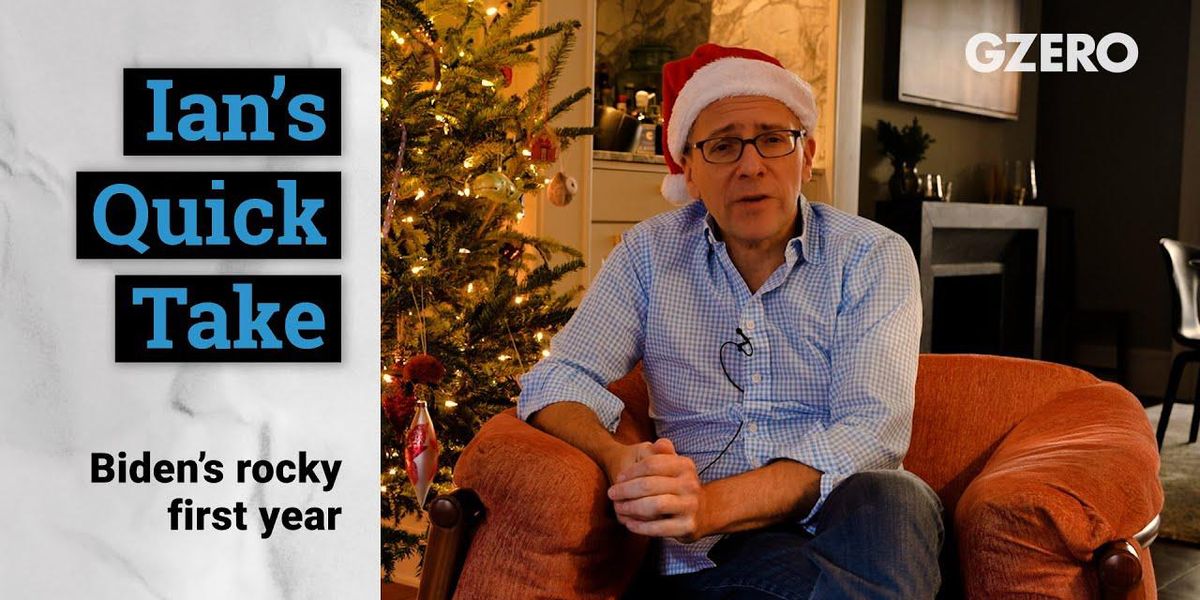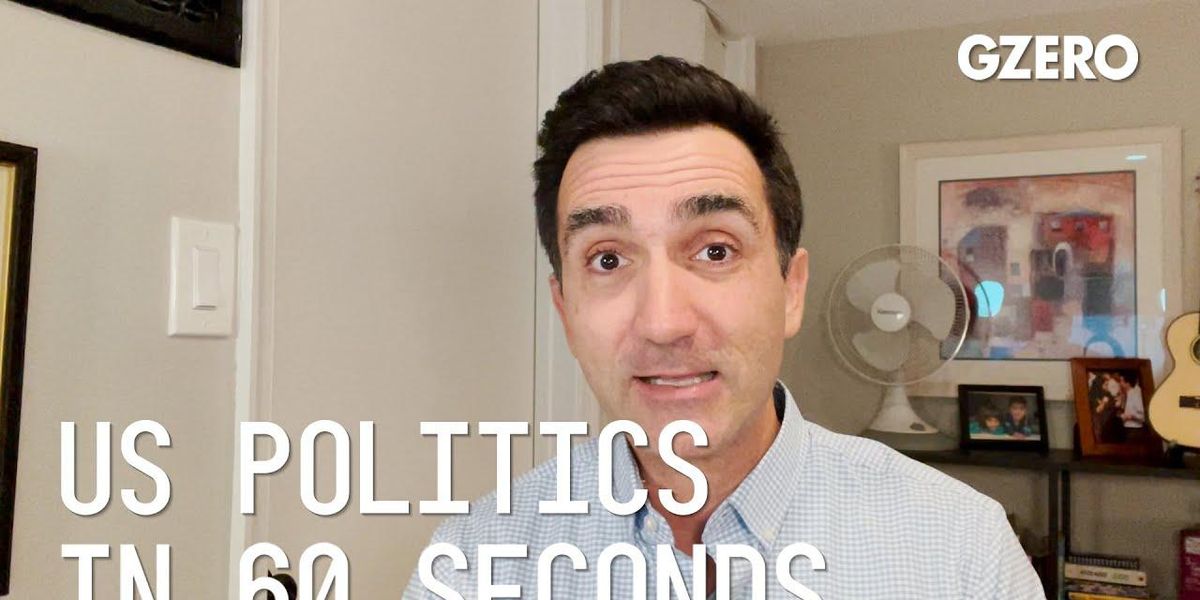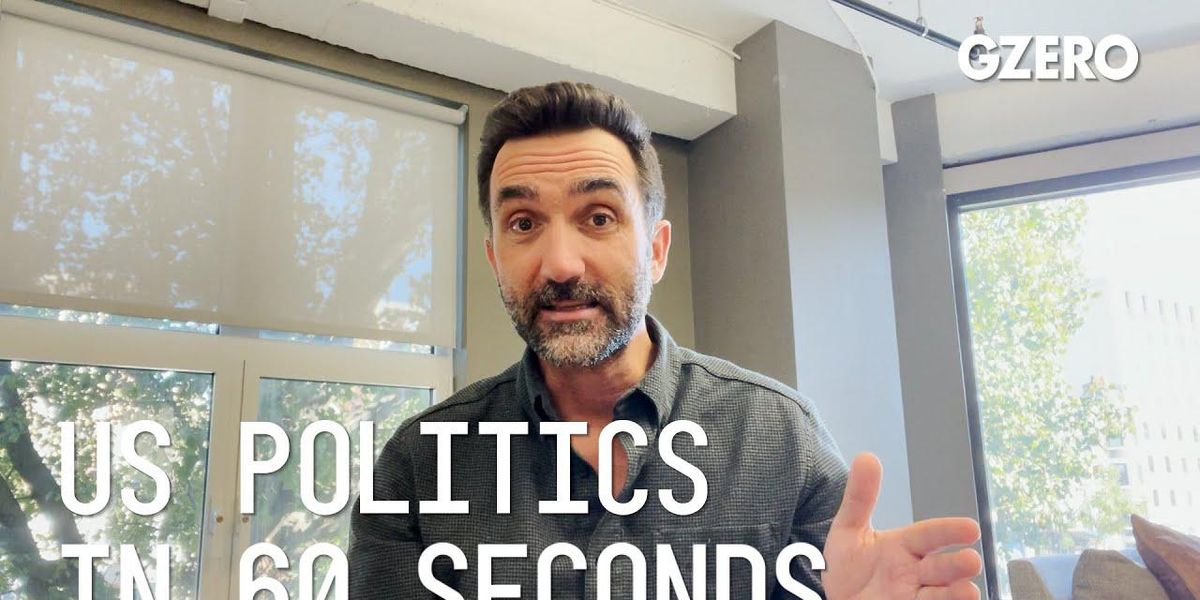Trending Now
We have updated our Privacy Policy and Terms of Use for Eurasia Group and its affiliates, including GZERO Media, to clarify the types of data we collect, how we collect it, how we use data and with whom we share data. By using our website you consent to our Terms and Conditions and Privacy Policy, including the transfer of your personal data to the United States from your country of residence, and our use of cookies described in our Cookie Policy.
{{ subpage.title }}
Ian Explains: Will US infrastructure finally be fixed?
At 6:05pm on a sweltering August evening in 2007, rush hour traffic was crawling across Minneapolis’ I-35 bridge. Then, the bridge began to shake.
Thirteen people died and 140 more were injured when Minnesota’s third-busiest bridge collapsed, plunging vehicles ten stories down into the rushing Mississippi river and leaving one school bus with 63 children teetering against a guardrail. An NTSB investigation later attributed the collapse to 300 tons of construction materials that had been placed on a 40-year-old design flaw in the bridge’s original construction. But while the flaw had gone undetected for decades, inspectors HAD rated the bridge in poor condition for 17 straight years.
The truth is that bridges in America fall down all the time, Ian Bremmer explains on GZERO World.
In fact, since the 2007 Minneapolis disaster, at least 21 US bridges have partially or entirely collapsed. A 2022 report found that 43,000 US bridges are QUOTE “structurally deficient.” The report also found that those same bridges are crossed 168 million times a day. At the current rate, it would take 30 years to fix all of the country’s structurally deficient bridges. Do you feel lucky?
Globally, of course, the number of faulty bridges is much higher, but at least here in the United States, things may be starting to change. On November 6, 2021, Congress passed the Biden administration’s $1.2 trillion dollar infrastructure bill, which includes $550 billion dollars for America’s roads, bridges, mass transit, rail, airports, and ports.
Secretary Pete Buttigieg has called it QUOTE "the single largest dedicated bridge investment since the construction of the Interstate highway system." But as we all know, allocating the money is only half the battle. Making sure it’s spent correctly is where the...rubber meets the road.
Watch the full episode of GZERO world: The road to repair: Pete Buttigieg & crumbling US infrastructure
The road to repair: Pete Buttigieg & crumbling US infrastructure
There's no sugarcoating it. America needs work. Not just when it comes to the state of democracy, either. A 2022 report found that 43,000 US bridges are “structurally deficient.” The report also found that those same bridges are crossed 168 million times a day. At the current rate, it would take 30 years to fix all of the country’s structurally deficient bridges. Do you feel lucky?
It's not a question Americans particularly want to ask themselves on every morning commute or summer road trip. The richest country in the history of the world should be able to keep its infrastructure updated and its roads intact. Globally, of course, the number of faulty bridges is much higher, but at least here in the United States, things may be starting to change. On November 6, 2021, Congress passed the Biden administration’s $1.2 trillion infrastructure bill, which includes $550 billion for America’s roads, bridges, mass transit, rail, airports, and ports. On GZERO World, Secretary Pete Buttigieg discusses what he has called "the single largest dedicated bridge investment since the construction of the Interstate highway system."
As we all know, allocating the money is only half the battle. Ensuring it’s spent correctly is where the...rubber meets the road. In a wide-ranging interview with Ian Bremmer, Secretary Buttigieg addresses pressing news, from the debt ceiling showdown in DC to the latest revelations following February's East Palestine train derailment. They also look big-picture at US infrastructure's role in foreign policy and where China's global aspirations clash with America's manufacturing concerns. Oh, and they talk 2024, of course, and about why the Secretary recently changed his permanent address from Indiana to that swing state, Michigan.
- Hard Numbers: Southwest Airlines facing fines, Ukrainian casualties, Ethiopia-Tigray flights, Iranians facing execution ›
- Podcast: Rebuilding American infrastructure with Pete Buttigieg ›
- Electric vehicle wars ›
- Biden: We must ‘finish the job’ of repairing US economy ›
- Episode 1: What infrastructure spending means for you ›
- Ian Explains: Will US infrastructure finally be fixed? - GZERO Media ›
- Pete Buttigieg's lessons learned about parental leave - GZERO Media ›
- Who's responsible for the East Palestine train disaster? - GZERO Media ›
- US summer travel may be easier than you think, says Pete Buttigieg - GZERO Media ›
Podcast: Rebuilding American infrastructure with Pete Buttigieg
Listen: In this episode of the GZERO World podcast, we’re bridging America’s divides, and we mean that literally. It’s infrastructure week on GZERO World, and Ian Bremmer is talking to Mr. Infrastructure himself: US Transportation Secretary Pete Buttigieg. They discuss the state of America’s roads, bridges, and tunnels, as well as the landmark legislation meant to upgrade them all. They also talk about how major technological advances in electric vehicles and industrial shipping are poised to change the ways we move, and the things we ship. Oh, and they talk 2024 and why the Secretary recently changed his permanent address to that swing state, Michigan.
- Electric vehicle wars ›
- Pete Buttigieg explains: How the debt limit impacts transportation ›
- Can Biden’s IRA work IRL? ›
- Jennifer Granholm: On clean energy, US is "putting our money where our mouth is” ›
- Episode 1: What infrastructure spending means for you ›
- Ian Explains: Will US infrastructure finally be fixed? - GZERO Media ›
- Who's responsible for the East Palestine train disaster? - GZERO Media ›
- US summer travel may be easier than you think, says Pete Buttigieg - GZERO Media ›
- The road to repair: Pete Buttigieg & crumbling US infrastructure - GZERO Media ›
Biden's rocky first year
Ian Bremmer's Quick Take:
It's been a very tough week in the United States, both because in New York, and, of course, the glad tidings of New York very quickly come to a theater near you, are increasingly concerns about breakthrough COVID cases. The potential for hospitals to get overwhelmed, even if omicron turns out to be significantly milder than previous variants. If you have 10X the number of cases and one-third the hospitalizations, you're still going to overwhelm hospitals. And what happens in New York does not stay in New York. It's not like Vegas here. It goes to the rest of the world and it goes across the country.
This, of course, is a real problem for the Biden administration that entered the presidency saying that we were all going to be independent from COVID by July 4th. That is not the case. We're still wearing masks. We still need boosters. And we're still dealing with all of this and we will be, and that is making life much more difficult for Biden. As is the fact that Senator Joe Manchin individually decided to put an end to the administration's effort to Build Back Better. Joe Manchin putting some coal in Joe Biden's stocking for Christmas. And that means that this signature piece of legislation that Biden would have hoped for his entire presidency is not happening. Maybe they'll find one or two pieces of it that they can get done next year, but it is a tiny sliver of what they were hoping for. And that's why you see the White House and members of the Democratic Party leadership so angry and hostile at Manchin right now, it's a big present for the Republicans.
So, in terms of the domestic politics of the presidency, the first year has been really challenging. Some of that is Biden's fault. I mean, the delinking of infrastructure bill from Build Back Better did allow them to get that $1.3 trillion passed, and that is significant, it is a win, it's something that the Trump administration and many administrations were unable to do. And Lord knows the Americans need to invest in infrastructure. They even got a fair number of Republicans to support the bill, showing you that even in this level of partisanship, obviously, good ideas reflect common sense and can pick up support. But beyond that, there's not much you can focus on from a legislative perspective that they're going to be able to get done, that they have been able to get done. And that's going to lead to very low approval ratings together with the fact that you didn't get vaccines and boosters rolled out, boosters particularly, rolled out across the population as quickly as you might have. The US still is really nowhere on testing. And you've seen all those lines in the tri-state area and you'll see them in other places as well.
So, I mean, Biden, on the merits, has been okay in responding to COVID. But of course the buck stops with the president and whatever the performance is, that's the way you're going to look at his success. And right now, almost a year in, with Americans facing an enormous wave from omicron, people not going to be very happy with him for that. On the foreign policy side, I would argue that there've been significant successes, and there's also been quite a few failures. Some of those failures are self-imposed. Some of those failures are constraints of massive division inside the United States. On successes, the transatlantic relationship, even with France, but across the board, is considerably stronger and more functional than it was under the Trump administration. There've been some wins, for example, on trade with the removal of the steel and aluminum tariffs, the Section 232, with the end of the fights between Boeing and Airbus facilitated by the administration, with the alternative minimum tax that was started with the US and the EU, but now is agreed upon by all of the OECD. That is, those are all significant. They're not massive, monumental, but they're significant economic wins that help to build trust in the transatlantic relationship.
What's next for infrastructure and Biden's Build Back Better plan?
Jon Lieber, head of Eurasia Group's coverage of political and policy developments in Washington, shares insights on US politics:
Now that President Biden has signed the bipartisan infrastructure bill, what's next for infrastructure?
The President this week signed a significant new investment in infrastructure, about $550 billion beyond the money that's already being spent in the baseline levels for the US infrastructure, and this is a big investment. It about doubles how much money the US spends on infrastructure over the next five years, and the money's going to go to all kinds of places, roads, bridges, tunnels, water projects, broadband deployment for Americans, climate resiliency, electric vehicles. There's a lot of different things that are going to be funded by this pot of cash.
A lot of the projects won't be seen for quite some time however. Much of the money that gets spent on infrastructure in the US goes through the Department of Transportation and then gets sent out through the states. You have to find contractors to do the job. You've got to identify the projects you want to spend money on. So the bulk of this money probably won't be spent until 2023, 2024, or 2025, and maybe even beyond that. But over time, Americans are going to start to see a lot of new projects going on in their communities.
However, the thing that's going to have an even bigger impact on Americans' lives is the next phase of President Biden's spending plans, which is the much larger, probably about $1.5 trillion Build Back Better bill. And this includes a whole lot of subsidies for health care, potentially for housing and education. Certainly a lot of money's going to go towards green energy. And there's also going to be money that extends for funds that were passed in the American Rescue Plan earlier this year to directly subsidize households with children and households below certain income thresholds. So some of these households will see as much as $3,600, additional cash in their pockets as a result of the child tax credit that's proposed by President Biden. Timing on this is much more uncertain. Given the holidays are approaching, it may not end up passing until next year, so many Americans won't see any benefit from this until probably the closer to the summertime of 2022.
Biden's infrastructure bill, explained
Biden's infrastructure bill, explained
Infrastructure week, at last.
For 4 years, the Trump administration promised and failed to deliver transformational investments in the nation’s physical infrastructure. Even before 45, Congress’s chronic inability to pass an infrastructure bill despite high levels of public support had become a running joke in Washington.
That ended late last Friday when Congress passed the first of two major fiscal bills President Joe Biden campaigned on. “We did something that’s long overdue, that long has been talked about in Washington, but never actually been done,” Biden said on Saturday.
An accomplishment that eluded Democratic and Republican administrations alike, the $1.2 trillion bipartisan infrastructure bill known as BIF will reauthorize planned surface transportation spending for the next five years as well as new spending on roads, bridges, rail, transit, power grids, water pipes, and broadband.
Want to understand the world a little better? Subscribe to GZERO Daily by Ian Bremmer for free and get new posts delivered to your inbox every week.
The fact that the bill attracted 13 Republican votes in the House and 19 in the Senate reflects infrastructure’s long-standing bipartisan appeal. The Democratic thumping in Virginia, on top of a near loss in a governor race that shouldn’t have been close in New Jersey, was the final push to ensure most Democrats came together, although intra-party divisions over tactics cost the bill votes from six progressive House members.
What’s in the bill
Only $550 billion of the $1.2 trillion bill is new spending, to be spread out over five years. This money will go toward delivering fixes to the nation’s outdated physical infrastructure while addressing generational challenges like climate change and the digital divide.
The biggest buckets the bill will fund include:
- Transportation. $110 billion for roads and bridges; $66 billion for passenger and freight rail; $39 billion for public transit systems; $25 billion for airports; $17 billion for ports; $11 billion for road safety programs; and $1 billion for reconnecting communities (largely of color) that were previously physically segregated by highways and bridges.
- Clean drinking water. $55 billion for water and wastewater infrastructure, including $15 billion for replacing lead pipes and $10 billion to clean up drinking water for the estimated 10 million households lacking safe drinking water.
- Broadband. $65 billion to provide reliable and affordable access to high-speed internet for every American and close a digital divide that limits opportunities for an estimated 17 million households, most of them from vulnerable or marginalized communities.
- Climate. $65 billion for clean energy transmission and grid-related investments; $47 billion for weatherization and climate resiliency, including protections against fires, droughts, floods, etc.; $21 billion for environmental remediation; $7.5 billion for a nationwide charging network for electric vehicles; and $7.5 billion to electrify buses and ferries.
According to the White House, the new spending is mostly paid for through unused Covid relief funds, the delay of a Medicare expense for a year, more stringent anti-fraud enforcement for unemployment insurance, tighter reporting rules for cryptocurrency investment gains, and other sources of revenue.
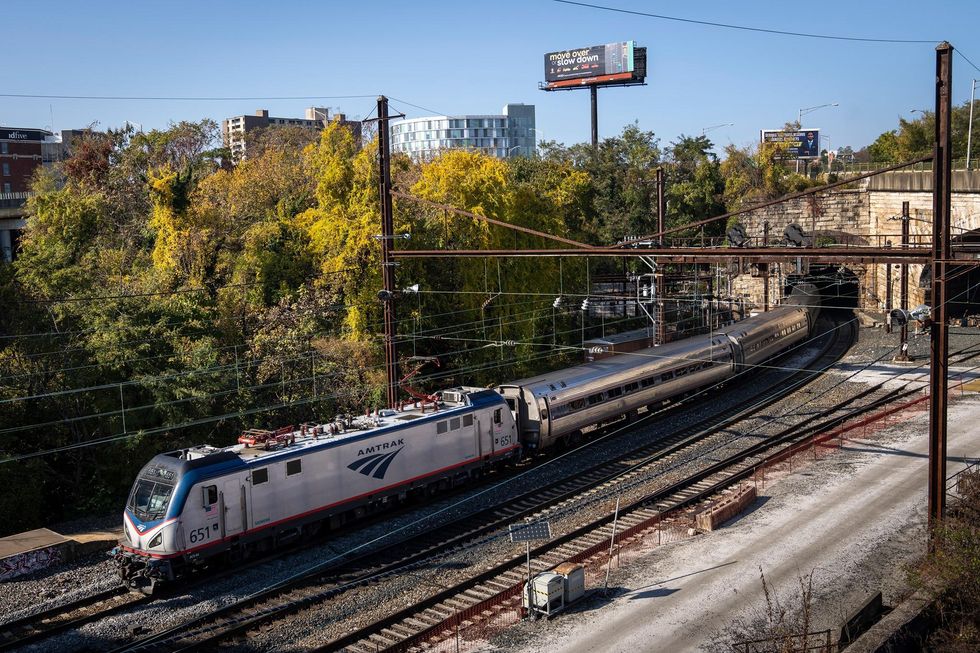 The bill will provide Amtrak with the largest federal investment since its creation. (Drew Angerer/Getty Images)
The bill will provide Amtrak with the largest federal investment since its creation. (Drew Angerer/Getty Images)
The Congressional Budget Office estimates that the bill will add $256 billion in projected deficits over ten years. Experts like Moody’s Mark Zandi say that once the bill’s pro-growth impact is taken into account, the addition to the deficit will be more modest.
What’s not in the bill
BIF falls short of funding the full spectrum of America’s most urgent needs. According to the American Society of Civil Engineers, the US needs to invest about $2.6 trillion in infrastructure over the next decade to meet basic national needs. Several more trillions in spending on clean energy and climate change adaptation and mitigation will be needed to achieve carbon neutrality by 2050.
In other words, while a breakthrough, the bill doesn’t go far enough. Among the things it doesn’t include:
- Any money for caregiving for the aging and disabled ($400 billion requested), workforce development ($100 billion requested), or modernizing Veteran Affairs hospitals ($18 billion requested).
- Enough money to replace lead pipes (estimated at $60 billion) or to seriously prevent and prepare for the worst impacts of climate change (estimated in the trillions).
- As much money as requested in the American Jobs Plan for roads and bridges ($49 billion more) or broadband expansion ($35 billion more).
Alas, the bill is the product of hard-fought compromises made along the way between Democrats and Republicans, and among Democrats, in order to reach a final deal.
I’ll take an insufficient bill that will be signed into law over more substantial legislation that can’t make it through Congress any day. It will make America more inclusive, more competitive, and more resilient than the country is today.
Why it matters
This is the largest federal investment in infrastructure in over a decade, and it is long overdue.
The American Society of Civil Engineers gives US infrastructure a score of C-, while the World Economic Forum ranks it 13th in the world. This is a result of decades of neglect, during which public spending on physical infrastructure persistently failed to keep up with economic growth. Continued underinvestment in infrastructure would cost Americans in terms of foregone productivity, growth, jobs, and living standards.
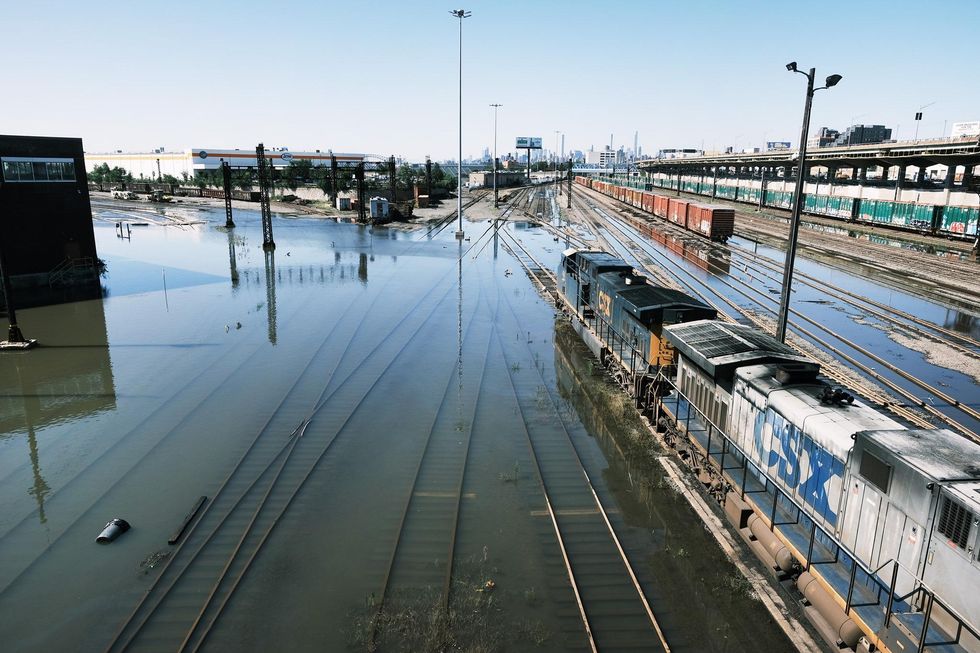 Train tracks flooded as Hurricane Ida moved through the Northeast. (Spencer Platt/Getty Images)
Train tracks flooded as Hurricane Ida moved through the Northeast. (Spencer Platt/Getty Images)
“Somewhere along the way, we stopped investing in ourselves, we stopped investing in our people, and we’ve risked losing our edge as a nation,” Biden said on Saturday. “We’re now turning it around in a big way.”
Economists estimate the infrastructure bill will generate benefits the include: increasing productivity growth, wages, and competitiveness, crowding in private sector investment, creating good jobs, boosting growth in the short and medium term, raising long-term growth potential, easing inflationary pressures, and reducing income inequality. Because the topline investment is small relative to the size of the economy, the magnitude of these benefits will be modest, albeit positive.
The bill also includes new measures to combat climate change like money for electric vehicles and modernizing the power grid, as well as significant funding for climate adaptation. While not nearly ambitious enough to address climate change on its own, the bill is arguably a step in the right direction, according to fellow Bulletin writer Andrew Revkin.
Perhaps most importantly, the bill will deliver critical public goods and services that the private sector is unable or unwilling to provide, and its benefits will accrue mostly to lower- and middle-income Americans. "For all you at home who feel left behind and forgotten in an economy that's changing so rapidly -- this bill is for you," Biden said on Saturday. “This is a blue-collar blueprint to rebuild America.”
🔔 And if you haven't already, don't forget to subscribe to my free newsletter, GZERO Daily by Ian Bremmer, to get new posts delivered to your inbox.
Who's the real President Joe?
Joe Biden can't seem to do anything these days without the approval of one very specific person.
Watch more PUPPET REGIME!
Subscribe to GZERO Media's YouTube channel to get notifications when new videos are published.
- Joe Biden's impossible Halloween costume - GZERO Media ›
- Joe Biden's trillion dollar tune | PUPPET REGIME - GZERO Media ›
- Biden’s quid pro quo with Zelensky - GZERO Media ›
- The price of a Thanksgiving pardon - GZERO Media ›
- America's Minimally Viable Candidates - GZERO Media ›
- Biden in Training: Has Joe still got it? - GZERO Media ›
- The 3am Call Comes for Biden - GZERO Media ›
- Trump reveals historic Putin chat in Musk interview - GZERO Media ›
- Trump breaks Biden's big news to Putin - GZERO Media ›
Republican 2021 election wins
Jon Lieber, head of Eurasia Group's coverage of political and policy developments in Washington, discusses the results of the US election on November 2.
What was the warning to Democrats in this week's governor's races?
Yesterday's elections in Virginia and New Jersey were a really bad sign for Democrats. Biden won both those states by 10 points and 16 points respectively just last year. In Virginia, the Republicans are going to win not only the governorship, but the top three spots in state government and take one of the houses of the legislature. And New Jersey, the Republican was way behind in the polls, but came within a hair's breadth of actually winning it.
Republicans had a great day across the board, with gains in the suburbs and gains across both states, but particularly gain with white women, which probably reflects, at least in the case of New Jersey, the fact that education was such a big focus, but also probably reflects a no Donald Trump effect. Without Donald Trump at the top of the ticket, a lot of the conservative-leaning suburbanite independents that fled the Republican Party in 2018 and 2020 came back into the fold.
Why is this bad for Democrats? Because even though Biden ran as a moderate with a very progressive platform, the progressives in the party have really been driving the legislative train and the agenda in the Biden administration. So now the Democrats have a problem. Even though most of their party is comfortable with a more left-wing agenda, their conservative block is sure to grow as several members become very worried about losing their seats in the 2022 midterms. This means trimming back President Biden's ambitious social spending agenda, but also creating more urgency to pass it. Republicans, feeling pretty good about the midterms right now, probably have better than even chances of taking that, certainly the House and probably the Senate.
